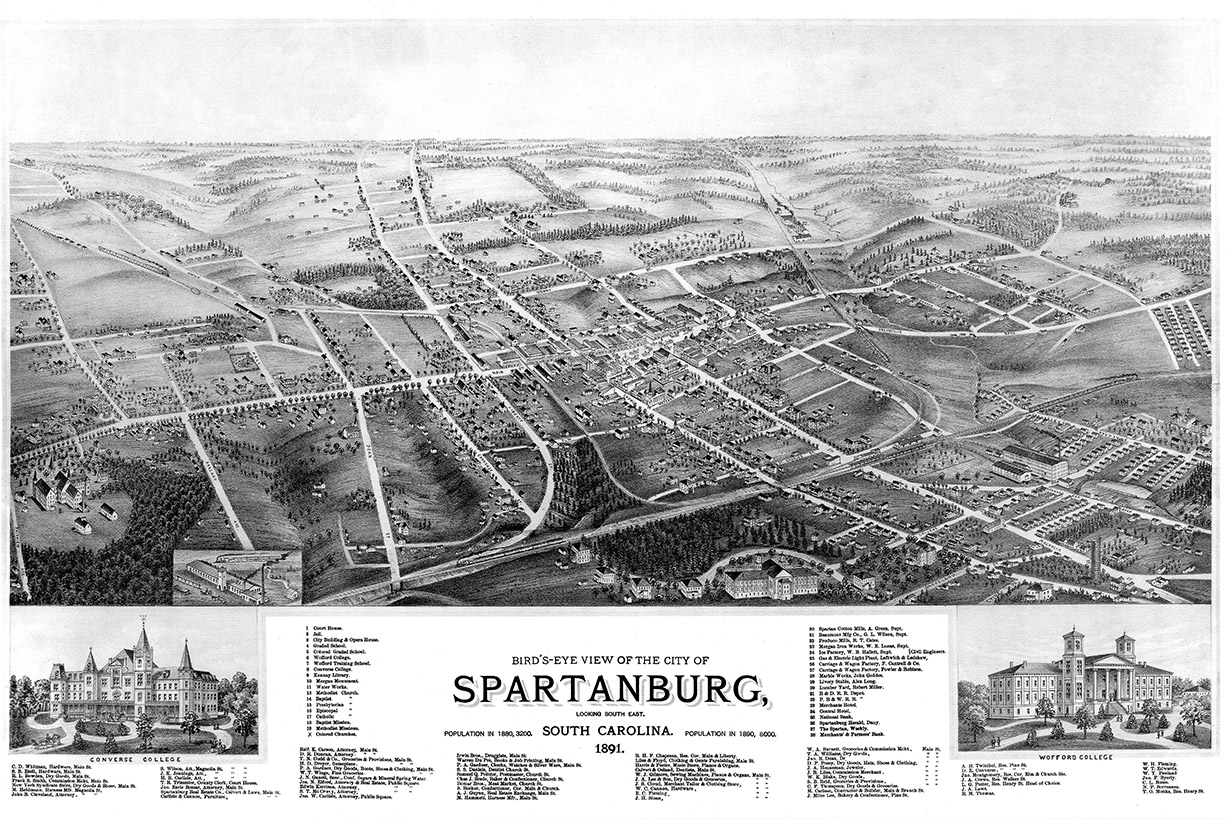By Dr. Phillip Stone ’94, college archivist
At nearly 170 years since its opening, Wofford’s age makes it stand out among American colleges and universities. That it still operates on its original campus makes it that much more unusual. One college historian has estimated that fewer than 200 colleges and universities in the United States can make that claim.
Benjamin Wofford’s will only required that the college be located “in my native district of Spartanburg.” Thus, the college could have been located anywhere in Spartanburg County. College historian D.D. Wallace noted that although the presumption was that the college would be located in the village, the trustees did explore other options; they considered a site in Glenn Springs and another in Woodruff. The original board of trustees consulted with other Methodist educators, who suggested that locating the college in a town would be preferable both for the intellectual climate and for the conduct of the students. In the village, the students could board with families, whereas in a rural setting, the college would have needed to build housing for students, so a town setting may simply have been more practical.
When trustees met in April 1851 in Spartanburg to organize, they agreed to purchase a parcel of land about three-quarters of a mile north of Spartanburg’s public square. Jesse Cleveland sold the trustees about 40 acres of his property for $1,835. The Cleveland family owned much of the land on the north side of Spartanburg, extending as far as present-day Cleveland Park. No evidence exists of any permanent occupation of the land that became the Wofford campus before the 1850s, and the histories of early Spartanburg suggest that the county had been hunting grounds for Indigenous peoples who lived to the east and west. The trustees also bought a 200-acre wooded tract a mile and a half north of campus to supply the faculty with firewood.
The original part of campus was actually fairly small and probably dictated the layout of the original buildings in a gentle crescent atop a ridge. Subsequent boards purchased adjoining land, as the original trustees had not made plans for future growth. It is indeed fortunate that the college was able to acquire nearby land or itmight have been forced to move from its original site. As Spartanburg grew, North Church Street was extended alongside the campus, and Spartanburg General Hospital (now Spartanburg Medical Center) opened north of the campus in 1921.
Only once in its history did events almost force the college to move. After World War II, the South Carolina Methodist Conference debated a plan to consolidate its three senior colleges (Wofford, Columbia and Lander) onto a new, coeducational campus. The conference recognized that the merged college would have to be in Spartanburg to keep with the terms of Benjamin Wofford’s will. The proposal was to acquire land in the northern part of Spartanburg County for a new campus. Friends of the college, however, objected to abandoning the Wofford campus, which was by then nearly a century old. Supporters of all of the colleges also opposed what would have amounted to a closing of the other two. After a period during which Wofford and Columbia shared an administration and board of trustees, the proposal was abandoned.
